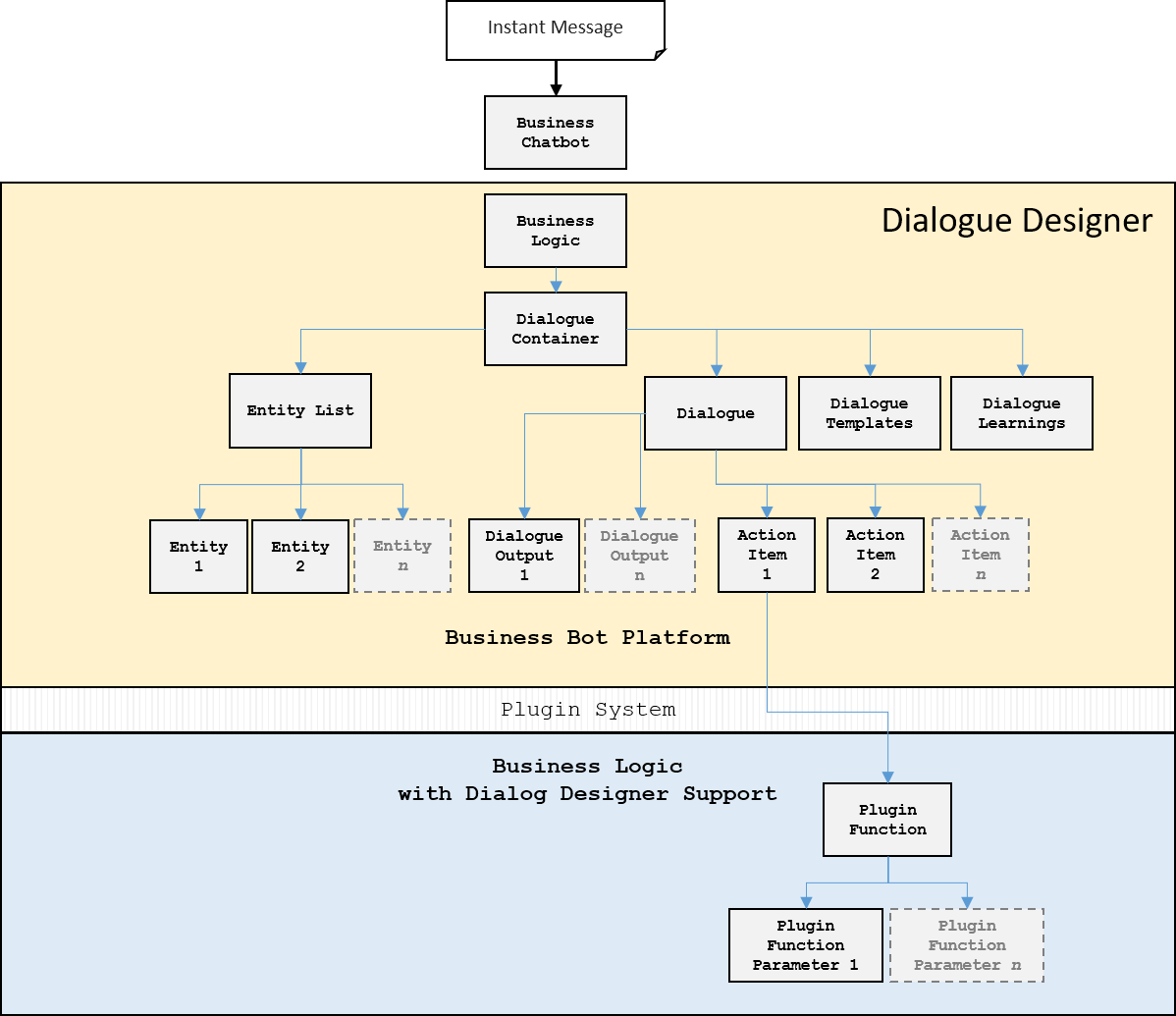Dialogue Designer¶
This user assistance section explains how to manage the dialogue designer and related dialogue components of the Business Bot platform.
The Dialog Designer assists you in creating dialogs between mobile users and the business logic. Dialog Designer is designed to make the creation of dialogs easy, fast and pleasant. In general, there are three types of dialogs - 1) user-led, 2) system-led and 3) mixed-initiative dialogs.
In user-led dialog, the user has the initiative.
Example:
1 2 3 | User: „How many visitors did we have in the online store in February?“
System: „In the month of February we had 10,000 visitors“
|
In system-guided dialog, the system takes the initiative.
Example:
1 2 3 4 5 6 7 8 9 | System: „Product X is only available in small quantities in stock. Should product X be reordered?“
User: „Yes“
System: „Quantity to be reordered?“
User: „100 piece“
System: „The order has just been executed.“ (…)
|
In Mixed Initiative Dialogue, both the system and the user can drive the dialogue. This is particularly useful when the system is used by both routine and sporadic users.
Example:
1 2 3 | User: „I would like to see the sales forecast for the Frankfurt store“
System: „For which month?“ (…)
|
The structure of the Dialogur Designer is structured into the following components:
Dialog-Containerconnects the building blocks likeEntity lists,DialogueandDialogue templates.Entity Listcontains theEntitiesof a groupEntityis a uniquely identifiable objectDialogueconsists of an incoming message (Dialogue-Input) and one or more outgoing messages (Dialogue-Output)Dialogue-Outputis an outgoing message (response)Dialogue-Templateis a template for an outgoing messageDialog-Learningis an incoming message (Dialogue-Input) that could not be assigned and is subject to a learning processAction Itemis an action module that is used in aDialogue-Outputand is executed as soon as theDialogue-Outputis used for a userPlugin-Functionis the function which is implemented in the business logic and executes an operation (e.g. Calculate 2+2 or Get the time back)Plugin-Function-Parameteris the parameter needed for the execution of an operation in the business logic (e.g. to add two values two parameters are needed -> calculate 2 + 2 (function:add(parameter1, parameter2))
The following figure serves to understand how the Dialogue Designer works.
